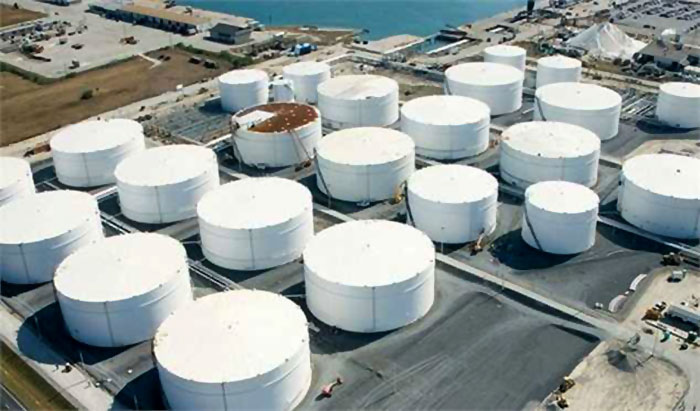
The main factor driving the demand of the tank storage industry is the development of the volume of transportation of oil and petroleum products.
Due to climate policies, improved engine efficiency and the use of electric vehicles, there is a risk of reduced demand for road fuels.
According to the International Energy Agency, global oil demand is still growing. By 2025, global oil consumption should reach 103.2 mb/d.
“The midstream segment continues to be of critical strategic importance, supporting the infrastructure and storage needs of the oil industry and ultimately enabling the market to operate more efficiently.” Nicolaas L Paardenkooper, CEO of Brooge Energy
Why is oil storage important?
In addition, they support the refining business by storing the finished products. Storage terminals are not only used for the storage of primary, intermediate and final products, but also facilitate the continuous supply of raw materials to refineries and chemical plants in the processing industry and absorb fluctuations in sales volume. Any change in the mode of transportation requires temporary storage capacities (terminals with tank storage facilities). Without such an infrastructure, an efficient logistics chain of the oil industry is unthinkable.
What are the main characteristics of this section?
The oil storage sector is characterized by stable growth, the business model is to ensure recurring income and high EBITDA margins. Due to the limited direct exposure to commodity prices (third-party storage providers do not have their own stored oil), the oil storage sector is much smaller than the energy industry. Therefore, this asset class is attractive to infrastructure-focused investors.
Storage facilities also provide additional revenue generating services. Input may vary depending on the demand for such services. These services include throughput, mixing, heating and transfer between tanks.

Many large energy companies and traders own and operate terminal storage facilities to help integrate their upstream or downstream assets into the market. Although the basic capabilities of these terminals are often the same as those of independent operators, they generally do not provide storage for third parties.
However, by using third-party storage providers, large energy companies can avoid the large capital expenditures required to build their own infrastructure.
Independent storage providers are more flexible and can better adapt to market movements because their storage space is accessible to the open market and used by third parties.
Tank storage terminals can be categorized as follows:
Hub Terminals: Located near major oil hubs (Amsterdam-Rotterdam-Antwerp (ARA), Houston, Singapore and United Arab Emirates (Fujairah)), where high-volume product flows intersect.
Import/Export Terminals: Used to store products that are exported or imported by domestic companies.
Industrial terminals: designed as part of larger chemical industry complexes.
Ports capacity (million cubic meters) 2008-2020 capacity of major players
ARA 38 4% Vopak, Koole, VTTI and Oiltanking
Houston 33 4% Kinder Morgan, Enterprise Products and Magellan Midstream
Singapore 15 8% Vopak, Oiltanking and Universal Group
Fujairah 10 20% Vopak, ADNOC, Horizon Terminals, Brooge Energy
Source: Edison Investment Research
What are the main growth factors?
The location of terminal assets is also a significant value driver: hub terminals are well located and less sensitive to local and regional economic conditions because their business activity is related to global trade (thus less volatility and a lower risk profile has it).
Excess storage capacity is driven by market structure (competition against backlog) and does not show much correlation with spot oil prices. Currently, several capacity development projects are planned/underway in major trade centers (mentioned above). According to Insights Global, total reservoir storage capacity may increase by 10% c over the next few years (from c storage capacity of 1 billion cubic meters in 2020).
Contango / What is the impact of the delay in oil reserves?
Contango occurs when futures prices are higher than current spot prices. If the difference between prices is large enough to cover storage, financing and transportation costs, traders can make a profit by buying oil now and selling it in futures markets for delivery later. However, to take advantage of this profit, traders need storage (and shipping) capacity. In this scenario, storage rates usually increase, but ancillary service costs may decrease due to less usage of these services.
Backlog occurs when futures prices are lower than spot prices. The storage rate decreases during the backlog but is balanced by higher overhead costs as the use of ancillary services typically increases.
Aban Petro offers its services to dear customers and manufacturers with the motto of best price, best quality, best customer support.